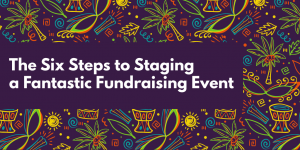The COVID-19 pandemic has dramatically altered the fundraising landscape. Gone are the days where you could safely shake hands with donors at a charity gala or easily sit down for coffee and converse with a major gift prospect.
Stay-at-home orders may be lifted in most areas, but the necessity of remote-friendly fundraising tactics remains critical. After all, your constituents still need vital support, and you need revenue to be able to fulfill that mission.
At this point, your nonprofit has already pivoted many activities to the virtual sphere. Events, board meetings, day-to-day operations, and donor engagement activities are all happening online, and with great success. A digital-first approach to fundraising extends to research too.
Because in-person interactions with donors are no longer feasible, it’s more important than ever to rely on sound research strategies to bolster your efforts.
Quality prospect research and donor data management strategies can help your organization make stronger, data-driven decisions while still staying safe. Whether you’re focusing on major donor fundraising or launching a peer-to-peer campaign, the best place to begin is with research.
By starting with a solid research foundation, you can launch well-informed marketing campaigns, plan successful virtual events, and cultivate strong relationships. And you can do it all while adhering to social distancing guidelines.
We’ll explore best practices for donor research in the work-from-home era, including:
- Drawing insights from your existing donor database.
- Using wealth screening tools for targeted virtual outreach.
- Seeking and implementing new feedback from your supporters.
By incorporating these strategies into your donor research efforts, your team can gain valuable information about your supporters without even having to leave the house.
Let’s jump in!

1. Draw insights from your exisiting donor base.
Learning about your donors starts with understanding the information you’ve already collected. Before trying to gather new information, make sure you effectively leverage the details you already have on hand.
Your existing donor data is a valuable treasure trove of information—as long as you know how to use it.
Whether you’re working with a simple donor database or a more complex nonprofit CRM (constituent relationship management), you need to implement best practices for collecting, cleaning, and using your data.
Then, you’ll be able to generate actionable insights you can use to inform future outreach.
Collecting Data
Ideally, you’ll have records that go beyond each supporter’s name and contact information. To build stronger donor profiles, ask yourself what other types of information would be most valuable to your organization.
You want to look back on every interaction you’ve had with a donor, including their donation history, event attendance, and if applicable, volunteer work. If your current donor management system doesn’t support this level of detail, you may want to consider an upgrade.
Along with demographic data and engagement history, think creatively about other data points that may help connect your donors to your mission.
For example, if you run an animal shelter, you may want to know whether the supporter is a cat or dog person, or even the name of their pet! These opportunities for deeper engagement will vary across organizations, but are still worth considering.
Cleaning Data
If you don’t have a protocol in place for regular data cleaning, you may be facing a CRM full of dirty data. According to AccuData’s guide to data hygiene, “Dirty data is data containing errors, whether it’s outdated, incomplete, duplicated, or simply incorrect.”
Even the smallest amount of “dirty” data in your system can lead to wasted time and resources at best, and misinformed campaign strategies at worst. To effectively leverage your donor database, you need to know that the information you’re working with is clean and error free.
Best practices for data hygiene include:
- Finding and merging duplicate profiles
- Standardizing the format of items like phone numbers and addresses
- Removing lapsed donors (after one final ask!)
- Removing profiles for deceased donors
These strategies will improve the quality of your database and ensure you’re only drawing insights from accurate information.
But it’s important to recognize that data hygiene isn’t a one-and-done action item. Instead, set up regular checkpoints to process your data and facilitate continued cleanliness.
Using Data
Once your data is collected and cleaned, it’s time to put it to work. You can use the information you’ve learned about donors to cultivate long-term relationships and make more successful fundraising asks.
Learning about your nonprofit’s supporters allows you to:
- Segment your donors for targeted outreach. Divide your supporters into different groups based on key criteria. There are three main kinds of segments: sociological, psychological, and preferential. Whichever category you choose, you’ll be positioned to address the unique needs, motivations, and engagement histories of individualized segments rather than a homogeneous whole. For instance, you may wish to segment donors by annual giving level.
- Personalize communications for a human touch. Even if you’re using mail merge technology or other marketing tools to conduct your outreach, including personal details will help you convey your interest in and appreciation for your supporters. In addition to addressing emails with the name of each supporter, include other customized details. For example, provide a concrete example that translates their contribution into its impact on your mission.
We recommend incorporating both of these strategies into your supporter outreach. And in both cases, don’t forget the power of donor-centric storytelling as a key tool to drive engagement!

2. Use wealth screening tools for targeted virtual outreach
Wealth screening can help you learn who among your current donors may have the potential to make a major contribution.
Through wealth screening, you can use publicly available data to make an accurate estimate of a potential donor’s wealth. But as any fundraiser knows, a donor’s wealth does not always translate into the amount that they are willing to give.
Instead of just looking at wealth metrics, also consider the donor’s affinity to give. DonorSearch defines donor affinity as the strength of a donor’s natural connection to your cause, which can be emotional, social, or political in nature.
To find all of this information, screen for two types of indicators:
- Wealth indicators. Markers like real estate ownership, stock holdings, and past political contributions signal a prospect’s financial capacity to give.
- Philanthropic indicators. This information helps you assess a prospect’s past charitable giving, board membership, and volunteer work. Individuals who have a history of nonprofit involvement are likely to continue that trend.
To find these data points, you could take the time to search through government databases and other records yourself. But this could take a long time depending on your database size.
It’s recommended to use a specialized wealth screening tool instead. This way, you’ll be able to gather information from the safety of your home without using up extra time and resources.
Once processed, wealth screening data can help you narrow down your list of prospects for major gifts and prioritize which relationships to cultivate.
When you’ve reached the point of making your ask, you’ll have the right background to determine an amount that makes sense for the donor—making it much harder to say no.

3. Seek and implement new feedback from supporters.
Conduct crisis-related outreach.
The crisis has impacted everyone differently, and it’s a good idea to check in with supporters to see how they are holding up. Connect on an emotional level rather than with a fundraising motive. If you are worried about appearing opportunistic during a time of financial crisis, you aren’t asking the right questions!
Supporters will feel more engaged with your nonprofit if they know you care about them as people, not just as piggy banks. Additionally, the conversations you have with donors may also illuminate useful information to drive your future fundraising efforts.
Gather donor preferences.
Do you know which communication strategies your supporters prefer? It’s easy to fall into stereotypes about generational preferences for communications. Ideas like all Gen Z hates phone calls and senior citizens don’t understand social media are commonplace, but are they always accurate?
When you make assumptions, you lose the opportunity to conduct outreach in a way that could resonate even more strongly with your donors! Instead of generalizing, gather data to find the truth. Appealing to donors in the right way will improve your overall fundraising efficacy.
To do this, you can either look at past engagement metrics, conduct split testing, or send out a survey for a more individualized approach.
If surveying supporters, ask about communication frequency and method. You’ll want to include the following options, as well as any other strategy you currently use:
- Face-to-face conversation
- Phone calls
- Texting
- Social media
Then, adapt your communications and engagement efforts to accommodate donor preferences. If you aren’t able to connect with donors through all of these methods right now, having this information on hand will improve your outreach efforts once social distancing recommendations are lifted.
Even without in-person conversations and events, there are still plenty of ways you can learn more about your current supporters and prospective donors. With the right research strategies and tools, you’ll be well-equipped to gather useful data from a safe distance. Good luck!
About the Author:
Sarah Tedesco is the Executive Vice President of DonorSearch, a prospect research and wealth screening company that focuses on proven philanthropy.
Sarah is responsible for managing the production and customer support department concerning client contract fulfillment, increasing retention rate and customer satisfaction.
She collaborates with other team members on a variety of issues including sales, marketing and product development ideas.







